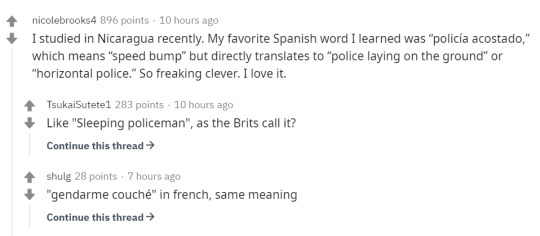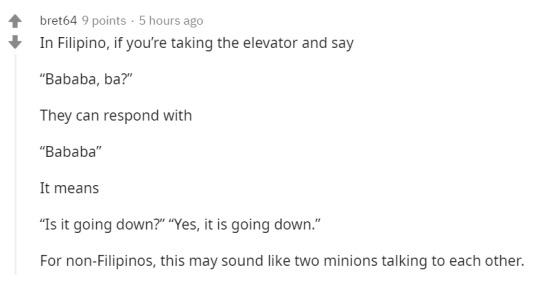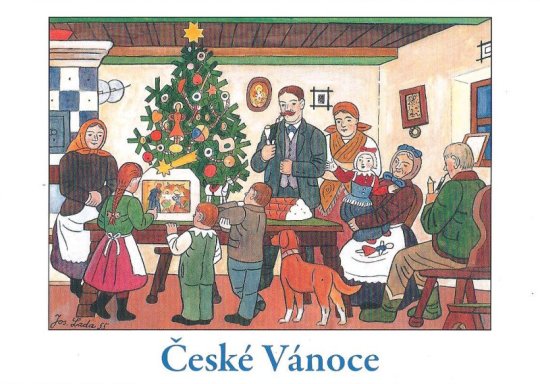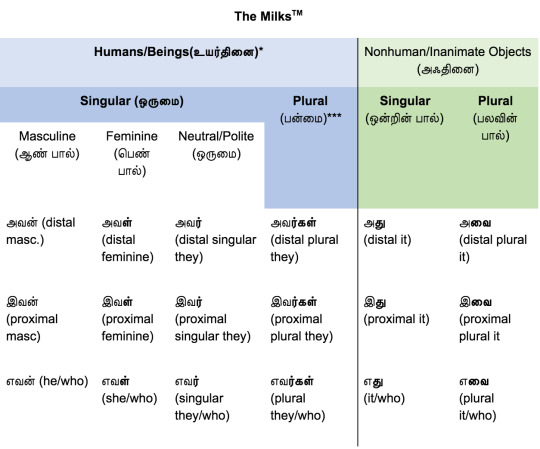Ahoj, I am Kazik, and welcome on my leaky language old boat. Home port: Polish. My fun(doms) blog: kaziklec.tumblr.com
Last active 60 minutes ago
Don't wanna be here? Send us removal request.
Photo










Not bad for a bunch of random noises we make with our mouths. Well done, everyone.
40K notes
·
View notes
Text
Me learning Czech: whew that’s a lot of diacritics
Lithuanian:

Slovak:

Devanagari:

Vietnamese:

750 notes
·
View notes
Photo










Root Letters In Arabic And Why They Are Coolest Things Ever
Edit: I just realised there’s a mistake in the second picture - the 3ain should have a kasrah, not a fathah it should be 3alima, not 3alama
1K notes
·
View notes
Photo

Go and Come | 行く・来る | いく・くる Hey guys, I hope you’ve been doing well! I’ve been busy with my TESOL assignments recently because I procrastinated and have left them all to the last minute lmao ( ´△`) Today is going to be a short post on a confusing topic for some Japanese learners - the difference between 「行く」and 「来る」! Both verbs describe movement from one place to another! 「行く」means “go” and 「来る」 means “come”. But by looking at the GENKI textbook you would realise that these words are used slightly differently in Japanese to how we would use them in English. It’s important to know that when using these verbs the location of the speaker matters. 「行く」 is used when someone or something moves away from the speaker or their viewpoint/the speakers location. 「来る」 is used when someone or something moves towards the speaker or their viewpoint/the speakers location. Otherwise, you can think of these verbs as meaning;
行く = movement to a place / point of start to somewhere
来る = movement from a place / somewhere to point of arrival
Examples: 今日渋谷に行くつもりです。I plan on going to Shibuya today. 今日パーティに誰が来るの? Who will come to the party today?
517 notes
·
View notes
Text
Christmas vocab list - Czech

Czech christmas:
Vánoce - Christmas Veselé Vánoce! - Merry Christmas! Šťastné a veselé! - another way of saying Merry Christmas (lit. happy and merry!) Prosinec (m) - December Advent (m) - advent (the period of 4 weeks before Christmas) Adventní věnec (m) - advent wreath Adventní kalendář (m) - advent calender Vánoční trhy - Christmas markets Mikuláš (m) - Saint Nicolas (5th December) Anděl (m) - angel Čert (m) - devil Štědrý den (m) - Christmas Day (24th) (Vánoční) koleda (f) - christmas carol Dárek (m) - present Balící papír (m) - wrapping paper Ježíšek (m) - baby Jesus (brings presents) Přání (n) - christmas card (Vánoční) stromeček (m) - christmas tree Svíčka (f) - candle Světlo (n) - light Ozdoba (f) - ornament zdobit - to decorate Hvězda (f) - star Sníh (m) - snow Sněhová vločka (f) - snowflake Rampouch (m) - icicle Sněhulák (m) - snowman Tradice (f) - tradition Rodina (f) - family Pohádky (f) - fairy tales Červený/á/é - red Zelený/á/é - green Bílý/á/é - white Ryba (f) - fish Kapr (m) - carp Bramborový salát (m) - potato salad Křížaly - dried apple pieces Vánočka (f) - (apparently, according to google translate) Christmas cake Perníček (m) - gingerbread cookie Sladkosti (pl) - candy Cukroví (n) - christmas baked sweets Čokoláda (f) - chocolate Krb (m) - fireplace Půlnoční mše (f) - midnight mass Ježíš - Jesus Narození (n) - birth Betlém (m) - nativity scene Slavit - to celebrate Sněžit - to snow Koulovat se - to have a snowball fight Anglophone christmas: skřítek, elf (m) - elf (Santa’s helper) sob (m) - reindeer sáně (m) - sleigh Severní pól - North Pole
kinda taken from Essi
178 notes
·
View notes
Text
So we have a stuffed hedgehog in my french 1 class named Ford…
62 notes
·
View notes
Photo

Welcome to our second vocab post, where you will find out that “is tomato a fruit or a vegetable?” was never really a question (in Tamil at least).
The word காய் [kaai] refers to both vegetables and unripe fruit. பழம் [pazham] means (ripe) fruit. In some cases, like the banana, the flower பூ [puu] is also used for cooking, and in the case of the banana, the leaf இலை [ilai] is used as a plate! Additionally, கிழங்கு [kilangu] refers to root vegetables/tubers.
These are used as suffixes to the name of the plant (மரம் [maram] meaning “tree”) they come from.
Using banana as an example (since we use all its parts):
வாழைப்பழம் - fruit [vaazhaippazham]
வாழைக்காய் - unripe fruit [vaazhaikkaai]
வாழையிலை - banana leaf [vaazhaiyilai]
வாழைப்பூ - banana flower [vaazhaipuu]
வாழை மரம் - banana tree [vaazhai maram]
Here are some common foods, both tropical & American.
Fruits:
Grape: முந்திரிப்பழம் [munthiripazham]
Pomegranate: மாதுளம்பழம் [maathulampazham - literally ‘woman’s heart-fruit���]
Mango: மாம்பழம் [maampazham]
Unripe mango: மாங்காய் [maangai, try it with chilli powder>>>]
Apple*: ஆப்பிள் [apple]
Orange*: ஆரஞ்சு [aaranju]
Woodapple: விளாம்பழம் [vilaampazham, I hope you never try this]
Pineapple: அன்னாசிப்பழம் [annaasippazham]
Tomato**: தக்காளிப்பழம் [thakkaalippazham]
Sugar apple: அன்னமுன்னா [annamunna, included this bc it’s fun to say]
Guava: கொய்யாப்பழம் [goyyappazham]
Papaya: பப்பாளிப்பழம் [pappalipazham]
*loan words/foreign fruits. When in doubt, just use the English name (ex. kiwi, avocado).
**tomato is indeed a fruit but is used like a vegetable (thank god)
Vegetables:
Cucumber: வெள்ளரிக்காய் [vellarikkaai]
Eggplant: கத்திரிக்காய் [kathirikkaai]
Onion: வெங்காயம் [vengaayam, also an insult. use it wisely or u will cry]
Pumpkin: பூசணிக்காய் [puusanikkaai]
Coconut: தெங்காய் [thengaai]
Bitter gourd: பாவைக்காய் [paavaikkaai]
Okra: வெண்டிக்காய் [vendikkaai]
Drumstick: முருங்கைக்காய் [murungaikaai]
Yardlong/Asparagus bean: பயற்றங்காய் [payatrangkaai] [colloquial: payathangaai]
Root Vegetables/Tubers
Potato: உருளைக்கிழங்கு [urulaikkizhangu]
Carrot*: கேரட் [carrot]
Cassava: மரவள்ளிக்கிழங்கு [maravellikizhangu, a potato knockoff imo]
Purple yam: ராசவள்ளிக்கிழங்கு [raasavallikkizhangu]
Yam: கருணைக்கிழங்கு [karunaikkizhangu]
Now you are a bonafide chef - well, at least in vocab terms!
93 notes
·
View notes
Photo

Folgen Sie uns auf YouTube www.youtube.com/learngermann
188 notes
·
View notes
Text
Subjonctif ou indicatif?
Indicatif: je sais que - I know that je suis sûr(e) que - I am sure that je suis certain(e) que - I am certain that je crois que - I believe that je pense que - I think that j'espère que – I hope that il est certain(e) que – it is certain that il est clair que – it is clear that il est évident que – it is obvious that il est exact que – it is exact that il est probable que – it is probable that il paraît que – it seems that il me semble que – it seems to me that Il est inévitable que – it is inevitable that
Subjonctif: j'ai peur que – I am afraid that je veux que – I want je ne croix pas que – I don’t believe that je ne suis pas sûr(e)/certain(e) que – I am not sure/certain that je suis désolé(e) que – I am sorry that je suis heureux(-euse) que – I am happy that je suis fier(e) que – I am proud that il est amusant que – it is amusing that il est bon que – it is good that il est dommage que – it is a pity that il est douteux que - it is doubtful that il est essentiel que – it is esencial that il est étonnant que - it is astonishing that il est gentil que - it is nice that il est impératif que - it is imperative that il est important que- it is important that il est possible que - it is possible that il est improbable que - it is improbable that il est indispensable que - it is essential that il est injuste que - it is unfair that il est juste que - it is fair that il est intéressant que - it is interesting that il est ironique que - it is ironic that il est naturel que - it is natural that il est nécessaire que - it is necessary that il est normal que - it is normal that il est préférable que - it is preferable that il est rare que - it is rare that il est surprenant que - it is surprising that il est (grand) temps que - it is (about) time that il est urgent que - it is urgent that il est utile que - it is useful that il est inutile que – it is useless that il convient que - it is appropriate that il faut que - it is necessary that il se peut que - it is possible that il semble que - it seems that il suffit que - it is enough that il vaut mieux que - it is better that ce n’est vaut pas (cela ne vaut pas) la peine que – it is not worth the trouble that il n'est pas sûr(e) que – it is not sure that il n'est pas certain que – it is not certain that il n'est pas vrai que – it is not true that il est étrange que – it is strange that c'est formidable/génial que – it is great that
Ici vous avez le reste des expressions après lesquelles on utilise soit le subjonctif soit l’infinitif.
Passez une bonne journée !
5K notes
·
View notes
Photo

Beginner Korean Nouns
사람 - Person 여자 - Woman 남자 - Man 아이 - Child 친구 - Friend 옷 - Clothes 과일 - Fruit 사과 - Apple/Apology 나무 - Tree 불 - Fire 사랑 - Love 커피 - Coffee 새 - Bird 꽃 - Flower 동물 - Animal 일 - Work 색 - Colour 빨간(색) - Red 파랑(색) - Blue 노란(색) - Yellow 차 - Tea/Car 고양이 - Cat 개 - Dog 집 - House 침대 - Bed 별 - Star 빛 - Light 달 - Moon 음식 / 밥 - Food 것 - Thing 하늘 - Sky 일/날 - Day 밤 - Night 주 - Week 월/달 - Month 년- Year
🌱 A&R 🌱
624 notes
·
View notes
Photo

Hello, everyone, I’m back from vacations and in time for a Back to School Portuguese vocabulary!
Adhesive tape – Fita cola
Backpack – Mochila
Back to School – Regresso às aulas
Black board – Quadro de giz
Binders – Dossiers
Bus – Autocarro
Classes – Aulas
Classroom – Sala de Aula
Crayon – Lápis de cera
Colour pencil – Lápis de cor
Computer – Computador
Desk – Secretária
Exam – Exame
Grades – Notas
Highlighters – Marcadores
Homework (HM) – Trabalho de casa (TPC)
Laptop – Portátil
Learning – Aprender (verb)
Locker – Cacifo
Mechanical pencil – Lapiseira
Notebook – Caderno
Notes – Notas
Paper – Papel
Pencil – Lápis
Pencil case – Estojo
Pen – Caneta
Planner – Agenda
Rubber – Borracha
School – Escola
School supplies – Material Escolar
Scissor – Tesoura
Student – Aluno (a)
Student’s Card – Cartão de aluno
Study – Estudar (verb)
Teacher – Professor(a)
Teaching – Ensinar (verb)
Test – Teste
Textbook – Manual escolar
I hope you enjoy this one as much as you did with the summer one! If you have any requests send me a message!
Have a good day xx
123 notes
·
View notes
Text
Kannada Lesson 6
The Instrumental-Ablative Case Welcome to Lesson 6 of Kannada by @currylangs! Today’s lesson is about ತೃತಿಯ ವಿಬಕ್ತಿ (tṛtiya vibhakti), the third case, which is the instrumental-ablative. This case is used to indicate a noun as the way you do something or the item that you use to do something. It is also used to indicate a noun as a point from which movement is going away. Let’s first look at all the endings:

See how the instrumental-ablative is used in practice in the examples below:
ಮೀನಮ್ಮ ಶಾಲೆಯಿಂದ ಬರುತ್ತಾಳೆ.
Mīnamma śāleyinda baruttāḷe.
Mīnamma comes from school
ನಾನು ಈ ಮೂರ್ತಿಯನ್ನು ಕೈಯಿಂದ ಶಿಲ್ಪ ನಿರ್ಮಿಸುತ್ತೇನೆ.
Nānu ī mūrtiyannu kaiyinda śilpa nirmisuttēne.
I make this statue by hand.
ಈವರು ಶಿಮ್ಮೊಗದಿಂದ ಹೊರಡುತ್ತಾರೆ.
Īvaru Śimmogadinda horaḍuttare.
They depart from Shimoga.
ಈ ಮನೆಯನ್ನು ಏನಿನಿಂದ ಕಟ್ಟುತ್ತಾನೆ?
Ī mane ēnininda kaṭṭuttāre?
What does he make this house from?
Personal Pronouns in the Instrumental-Ablative Case:

That’s it for this week. Shoot us an ask if you have any questions.
17 notes
·
View notes
Text
Tamil Genders and Suffixes
The word for gender in Tamil is பாலினம் (paalinam) and the grammatical term for gender would be பால் (paal, coincidentally also the word for milk). Here we will look at the various genders, which form the basic grammatical structure of the language. If you master these you’ll have a basic understanding of how Tamil grammar functions, and will be well on your way to forming a coherent sentence. (yay!)
SINGULAR & PLURAL
This table may look daunting at first! But it is literally just a table of suffixes which are always the same.

(*) essentially ‘higher beings with six senses’, the sixth being coherent thought, so doesn’t include animals but does include gods, demons and other mythical beings.
(**) there are people who argue that -ர் is a polite masculine form (and then dropping the -ள் gives the polite feminine form, ie. அவர் and அவ are polite masculine and feminine). This is really only used in speech. அவர் can be used for any singular gender and is always polite - so use this by default, you’ll either sound perfectly fine or overly polite, which is never a bad thing. (my canadian sl-ness is showing)
Also because I’m a nerd, I remember seeing a tumblr post arguing about how the feminine conjugations of words in English rely on the masculine (like, woman, she, her). Tamil doesn’t have that issue *slides past you in socks while putting on sunglasses* Nice.
Technically you could have a full informal conversation now. “எது?” “அது!” (“Which?” “That!” aka me when my parents ask me to grab something lol)
Summary of genders:

(****) Common error is using -வைகள் for the it plural, because of the -கள் suffix meaning a plural. This is incorrect no matter what! (But I know some adult SL tamils, instead of saying அவர்கள் for a plural they, sometimes say அவையள். It’s a weird slang thing and kind of rude, tbh).
TENSES
Using the verb செய் (sei, ‘to do’) as an example:

(*) Translations (down the column): he did, he is doing, he will do
(**) More commonly: செய்யப்போகின்றன but the table version is the most correct
This is the end of this lesson, thank you for reading! As usual, if you have questions please direct them to this blog, @cassandor, or @asspiratedconsonant.
92 notes
·
View notes
Text
🇮🇷 Autumn Vocab in Farsi 🇮🇷

Autumn = پاییز (pâyîz), خزان (khazân) 23 Aug.-22 Sep. = شهریور (shahrivar) 23 Sep.-22 Oct. = مهر (mehr) 23 Oct.-21 Nov. = آبان (âbân) 22 Nov.-21 Dec. = آذر (âzar)
Mehregân* (1 Oct.) = مهرگان
marjoram = مرزنگوش (marzangûsh)
kohl (eyeliner) = سرمه (sormeh)
frankincense = کندر (kondor)
pomegranate = انار (ânâr)
almond = بادام (bâdâm)
pistachio = پسته (peshte)
sharbat (sweet drink) = شربت
festival, feast = جشن (jashn) harvest = برداشت (bardâsht) farmer = کشاورز (keshvâvarz) crop = محصول (mahsûl) wheat = گندم (gandom) barley = جو (jou) millet = ارزن (arzan)
golden leaves = برگهای طلایی (barghây-e-talâyi) oak tree = بلوط (balût) chestnut = شاهبلوط (shâh-balût) beech tree = آلش (âlash) decidious = برگریز (barg-zîr) evergreen = همیشهسبز (hamishe-sabz)
fire = آتش (âtash) smoke = دود (dûd) ash = خاکستر (khâkestar) ice = یخ (yakh) cold(ness) = سرما (sarmâ) warmth = گرمی (garmi) darkness = تیرگی (tîregi) rainy = بارانی (bârâni) snowy = برفی (barfi) puddle = چاله آب (châle-ye-âb)
quilt = دواج (davâj) scarf = شال (shâl) gloves = دستکشها (dastkeshhâ) jacket = ژاکت (zhâket) (wellington) boots = چکمهها (chakmehâ) candle = شمع (sham’)

*Mehregân is the Iranian autumn festival of friendship, affection and love which has Zoroastrian origins; here is its wikipedia article
photo by Farhad Safari
362 notes
·
View notes
Text
Basic ~food~ vocabulary in Chinese

*Verb 吃 is normally followed by the object. For example, the sentence “Have you already eaten?” will be “你已经吃饭了吗?” which would literally mean “Have you already eaten food?”
【shuǐguǒ】

【shūcài】

【rǔpǐn】

* 牛奶 niúnǎi - cow milk; 羊奶 yángnǎi - sheep milk, 杏仁奶 xìngrén nǎi - almond milk
【miànshí】



607 notes
·
View notes

